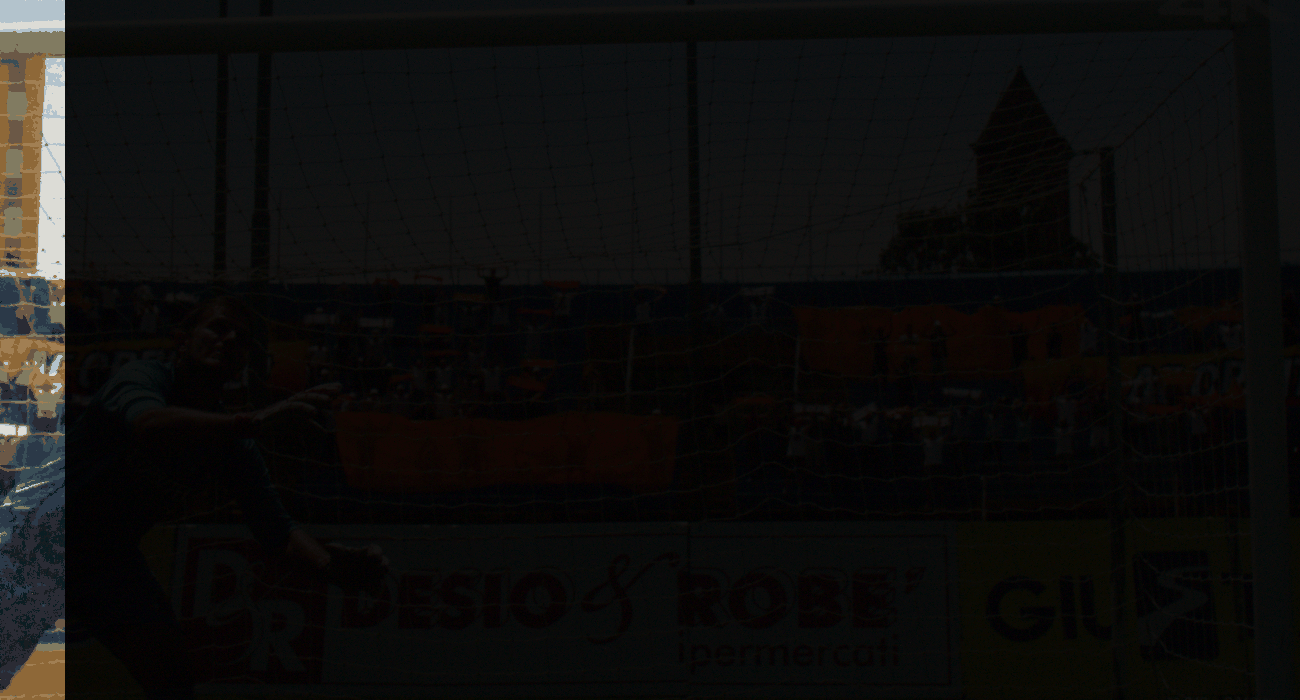This repository contains the official implementation of the following paper:
Gengchen Zhang, Yulun Zhang, Xin Yuan and Ying Fu. "Binarized Low-light Raw Video Enhancement", In CVPR, 2024.
In this work, we design a binary raw video enhancement model (BRVE). It can achieve satisfactory results with low memory and computation cost.
Our BRVE has two main innovations:
-
An easy-to-binarize spatial-temporal shift operation
-
A distribution-aware binary convolution (DABC)
Create conda pytorch environment
conda create -n BRVE python=3.7
conda activate BRVE
conda install pytorch=1.11 torchvision cudatoolkit=11.3 -c pytorch
Install mmcv
pip install openmim
mim install mmcv-full==1.6.0
Setup mmedit with BRVE
git clone https://github.com/zhanggengchen/BRVE.git
cd BRVE
pip install -v -e .
Install dependencies
pip install -r requirements/brve.txt
Download datasets
Create the folder to place datasets.
mkdir datasets
The LLRVD dataset can be downloaded from Baidu Disk (code: xydx).
The SMOID dataset is currently not available in this repository.
Directly download datasets to datasets/ or use symbolic link.
ln -s path_to_LLRVD datasets/LLRVD
ln -s path_to_SMOID datasets/SMOID
Datasets should be organized as follows (Click to expand) :
|--datasets
| |--LLRVD
| | |--ISP_info
| | | |--1
| | | | |--1.npy
| | | | |--2.npy
| | | | ...
| | | |--2
| | | | |--1.npy
| | | | |--2.npy
| | | | ...
| | | ...
| | |--ratio_gt
| | | |--1
| | | | |--gt.npy
| | | |--2
| | | | |--gt.npy
| | | ...
| | |--ratio_noisy_all
| | | |--1
| | | | |--125
| | | | | |--lq.npy
| | | | |--160
| | | | | |--lq.npy
| | | | |--250
| | | | | |--lq.npy
| | | |--2
| | | | |--100
| | | | | |--lq.npy
| | | | |--125
| | | | | |--lq.npy
| | | | |--200
| | | | | |--lq.npy
| | | ...
| |--SMOID
| | |--_Scene1
| | | |--Gain0Gain0
| | | | |--Bright
| | | | | |--RAW
| | | | | | |--raw_target.npy
| | | | |--Dark
| | | | | |--RAW
| | | | | | |--raw_input.npy
| | | |--Gain15Gain0
| | | | |--Bright
| | | | | |--RAW
| | | | | | |--raw_target.npy
| | | | |--Dark
| | | | | |--RAW
| | | | | | |--raw_input.npy
| | | |--Gain30Gain0
| | | | |--Bright
| | | | | |--RAW
| | | | | | |--raw_target.npy
| | | | |--Dark
| | | | | |--RAW
| | | | | | |--raw_input.npy
| | |--_Scene2
| | | |--Gain0Gain0
| | | | |--Bright
| | | | | |--RAW
| | | | | | |--raw_target.npy
| | | | |--Dark
| | | | | |--RAW
| | | | | | |--raw_input.npy
| | | |--Gain15Gain0
| | | | |--Bright
| | | | | |--RAW
| | | | | | |--raw_target.npy
| | | | |--Dark
| | | | | |--RAW
| | | | | | |--raw_input.npy
| | | |--Gain30Gain0
| | | | |--Bright
| | | | | |--RAW
| | | | | | |--raw_target.npy
| | | | |--Dark
| | | | | |--RAW
| | | | | | |--raw_input.npy
| | ...
Prepare pretrained models
Create the folder to place pretrained models.
mkdir pretrained_models
The BRVE model trained on LLRVD dataset can be downloaded from Google Drive or Baidu Disk (code: 4v88).
The BRVE model trained on SMOID dataset can be downloaded from Google Drive or Baidu Disk (code: wq1u).
Put the downloaded pretrained models to pretrained_models/
Test on the LLRVD dataset
Run the following command to reproduce the results in Table 1.
torchrun --nnodes=1 --node_rank=0 --master_addr="127.0.0.1" --nproc_per_node=1 --master_port=29500 tools/test.py configs/BRVE_LLRVD.py pretrained_models/BRVE_LLRVD.pth --seed 0 --out test_results/BRVE_LLRVD/result.json --save-path test_results/BRVE_LLRVD --launcher pytorch
Notes
Set --nproc_per_node=2 to use 2 GPUs for distributed test.
The path to configuration file configs/BRVE_LLRVD.py is required.
The path to pretrained model pretrained_models/BRVE_LLRVD.pth is required.
The path to save the quantitative results is specified by --out test_results/BRVE_LLRVD/result.json.
The path to save enhanced frames and videos is specified by --save-path test_results/BRVE_LLRVD. The argument --save-path is optional.
Test on the SMOID dataset
Run the following command to reproduce the results in Table 1.
torchrun --nnodes=1 --node_rank=0 --master_addr="127.0.0.1" --nproc_per_node=1 --master_port=29500 tools/test.py configs/BRVE_SMOID.py pretrained_models/BRVE_SMOID.pth --seed 0 --out test_results/BRVE_SMOID/result.json --save-path test_results/BRVE_SMOID --launcher pytorch
Notes
Set --master_port=29501 if there is a test process running on port 29500.
Train on the LLRVD dataset
torchrun --nnodes=1 --node_rank=0 --master_addr="127.0.0.1" --nproc_per_node=1 --master_port=29500 tools/train.py configs/BRVE_LLRVD.py --seed 0 --launcher pytorch
Train on the SMOID dataset
torchrun --nnodes=1 --node_rank=0 --master_addr="127.0.0.1" --nproc_per_node=2 --master_port=29500 tools/train.py configs/BRVE_SMOID.py --seed 0 --launcher pytorch
Notes
We use 2 GPUs to train BRVE model on SMOID dataset.
Evaluating the complexity of BRVE
We input a video with 100 frames and a resolution of
python tools/get_flops_bnn.py configs/BRVE_LLRVD.py --shape 100 4 128 128
Our code is developed based on BasicVSR++, Shift-Net and MMEditing (MMagic now).
The implementation of BNN is based on BBCU and IRNet.
We thank these public repositories for their excellent code.
@article{BRVE_arxiv_2024,
title={Binarized Low-light Raw Video Enhancement},
author={Gengchen Zhang and Yulun Zhang and Xin Yuan and Ying Fu},
journal={arXiv preprint arXiv:2403.19944},
year={2024}
}


